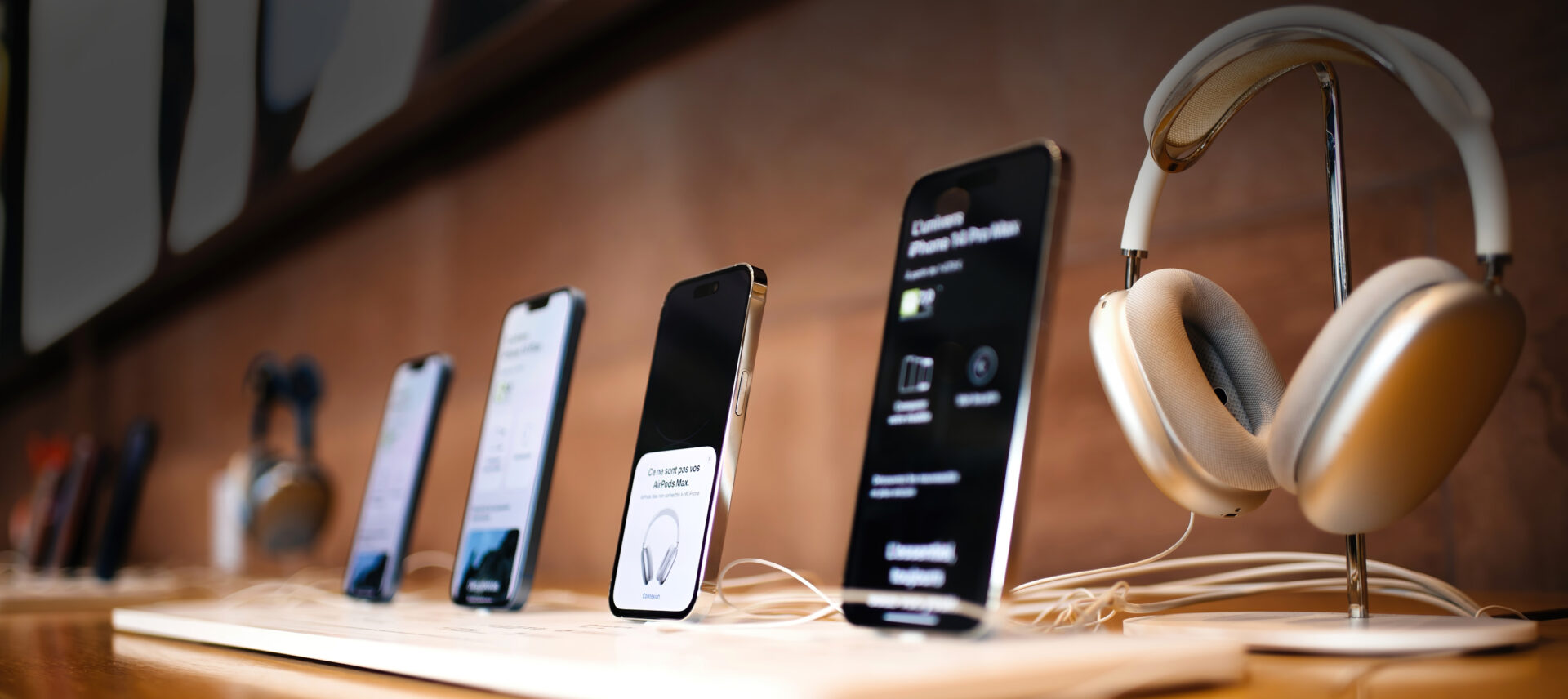
Article
Marrying Digital UI/UX Design With Physical Product Development
Don’t wait until a product is ready for manufacturing to add in UX/UI elements. Learn why an integrated approach to physical and digital design is a must.
How many times have you held a sleek, new gadget in your hand, only to become quickly disenchanted by a clunky or hard-to-use digital interface? It’s like getting excited about a beautifully wrapped gift only to discover an odd mishmash of random items inside.
As a marketing leader, you can’t afford to disappoint your users like this.
The world of product design has grown beyond just creating a visually appealing physical form or a standalone digital platform. Now, it’s often necessary to blend these two aspects into a seamless, interactive, and intuitive whole.
But incorporating user-friendly digital interfaces into physical products can be challenging, especially for designers and engineers who have spent decades developing complex physical products for slow-to-evolve or highly regulated industries. And if your internal team is struggling to effectively fuse together the physical and the digital? It might be time to consider getting help from an external partner like M3.
I’m a UI/UX designer who joined M3 after several years of working for fast-paced creative agencies. So I know firsthand what it takes to move beyond working solely in one realm (digital) to working in both (digital + hardware).
Here are three lessons I’ve learned so far — and a look at why M3’s holistic approach leads to better product outcomes.
1. Creating Physical and Digital Solutions in Tandem Leads to Superior UX
Even in today’s digital-first world, there still exists a pervasive culture that digital and physical products are separate entities. As a result, it’s common for companies to work on the hardware first and then reach out to a digital designer to retrofit additional digital elements the product requires. This, of course, can lead to a terrible user experience. At the very least, the resulting UI won’t be as seamless and intuitive as it could be.
But at M3, we design the physical product and the digital interface simultaneously (or alongside other elements like pairing functionality, apps, etc). And it’s been eye-opening to see how beneficial it is to approach product development in this holistic way.
Designing the digital and physical elements together enables the product development team to:
- Bring a wider variety of design backgrounds and specialties to the table to influence the direction of the concept
- Think about the entire user experience from a big-picture perspective rather than in a piecemeal way
- Avoid creating a design concept that is detrimental to the digital interface’s UX (and vice versa)
- Eliminate the re-work that can happen when a physical design simply doesn’t integrate effectively with a digital one
- Tear down silos and generate better, more collaborative design solutions than each discipline could possibly come up with on its own
Prior to coming to M3, I designed digital solutions (apps, websites, webapps, etc.) for products that were already designed (computers, smart phones, tablets, etc.). My choices were limited. But now, I get to collaborate with engineers and industrial designers to make sure each design choice is carefully calibrated with the overall product’s UX in mind. As a result, the difference in the quality of the user experience is night and day.
2. Conducting User Research and Testing on Your Product’s Physical and Digital Components is Vital
Waiting to design the digital components of your product until after the physical elements are complete has many drawbacks. One is that you miss out on incorporating those digital elements into the research and user testing processes.
At M3, the strategy phase happens at the beginning of a project and becomes the foundation upon which the rest of the engagement is built. This is when we:
- Challenge assumptions you may have about your users’ needs, wants, and pain points
- Conduct market and user research to uncover areas of unmet need
- Engage in preliminary user testing to discover what design elements resonate and which don’t
- Create success drivers to ensure we prioritize the right product requirements from your PRD
- And much more
Here’s the problem. If you treat your product’s digital components as an afterthought rather than as a core part of the design, the digital UI/UX won’t be part of the strategy phase. And that means you risk missing out on valuable, potentially game-changing insights.
Your product’s digital elements should also be part of later-stage prototyping, validation, and testing. During the latter part of the development process, we test and validate our design choices to make sure they’re viable, user-friendly, manufacturable, and compliant with industry-specific regulations.
Again, if your product’s digital components aren’t included in this stage, they’re not getting prototyped, tested, or validated. And that means you’re missing out on the chance to identify potential issues before they become costly problems.
True, if you seek out a digital solution at a later time, good digital designers will conduct separate testing on the concepts they generate. But take it from me, the testing process is nowhere near as thorough, time intensive, and rigorous as what M3 offers. I used to spend between two weeks and one month on research and testing at my previous agency. Now I spend much more time digging into in-depth user research. And this months-long process, involving a wide variety of methodologies and tactics, ensures I get to the heart of the problem much more effectively than I ever knew how to do before.
3. Future-Proofing Your Product’s Digital UI Requires Diligence and Flexibility
One thing that truly surprised me when I joined the M3 team is how long the general development timeline is for the types of products we create. In a purely digital landscape, I often designed eight to ten complete projects per year (or even more!) But here, we can’t rush the process. Since we’re designing the hardware at the same time as the digital component, there’s so many more things affecting the development schedule like waiting for a part to come in or waiting on the client to finalize an ID direction.
That’s not to say we can’t move quickly, but simply put, developing complex physical products — especially highly regulated ones like medical devices — requires more time than designing exclusively digital products. In some cases, it can take years to get a single product from project kickoff all the way to market.
That can be problematic for digital designers. After all, the digital landscape evolves rapidly, and what’s in style today could look hopelessly old-fashioned tomorrow. Worse, user expectations regarding how user interfaces should function change quickly, too. Take Instagram, for example. Its UI is totally different today than it was a few years ago.
So how can you make sure your product’s digital elements don’t become obsolete too quickly?
We mitigate this risk by:
- Avoiding fleeting, flashy design trends in favor of proven, more enduring choices
- Building in time to revisit the product’s digital components in the final months prior to its completion
- Creating a design that’s adaptable in case it becomes necessary to make last-minute changes
- Embracing accessibility best practices since many of those principles are longer lasting
Of course, we also make it our business to stay at the forefront of design and finish every project well. Working with a forward-focused partner is often the best way to ensure your product withstands the test of time.
Marry Digital Design to Physical Product Development at Your Project’s Outset
It’s still rare for designers to think about a product’s physical and digital elements in an integrated way. But at M3, we make it a priority to bring a multi-disciplinary and cross-functional perspective to every project we take on. We know what it takes to design comprehensive, user-friendly solutions that will set your product apart from the competition.
So don’t sweat it if you don’t know how to design the physical and digital aspects of your next product. We can help — just reach out.





